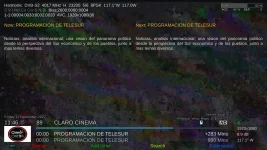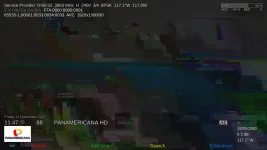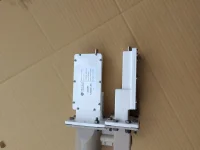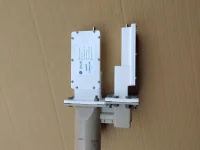You are using an out of date browser. It may not display this or other websites correctly.
You should upgrade or use an alternative browser.
You should upgrade or use an alternative browser.
Norsat C-band lnbf
- Thread starter lme
- Start date
I think there is something funky about the Panamericana signal. That's the one I have had so much trouble with.
But my Mio would lock it when my other receivers couldn't. Working ok so far since I changed lnb's... but the signal level is never very good.
BTW: Panamerican is available free online. Got to run now but I can dig up the link later if you need it.
But my Mio would lock it when my other receivers couldn't. Working ok so far since I changed lnb's... but the signal level is never very good.
BTW: Panamerican is available free online. Got to run now but I can dig up the link later if you need it.
So, I think my guess that the tuner in my edision is a lemon is accurate.
I noticed that in to instances (so far), edision shows better snr than vu, but with snowy pic !!
vu shows lower snr but the pic is steady !!!
How did you manage to get your Vu+ Zero4K to show signal in db? Mine seems to only show in % which is not the same.
The transponder for Claro Cinema is DVB-S2 8PSK with a fec of 5/6. A signal such as this needs around 9.4 - 10db to open correctly, but your showing about 9db for signal.Your below the signal threshold to correctly open this channel. Plus it is biss encrypted which can cause other signal related problems.
If the Zero4K is working that much better for you then sell the MIO and get another Zero4K. Most likely, you need to do something to improve your signal a bit. LNB's can only do so much. LNB's are not miracle workers.
lme
Legit VIP
few years ago, vu was showing snr in % & db, but now has % only option. I can only estimate the equivalent of % in db.How did you manage to get your Vu+ Zero4K to show signal in db? Mine seems to only show in % which is not the same.
The transponder for Claro Cinema is DVB-S2 8PSK with a fec of 5/6. A signal such as this needs around 9.4 - 10db to open correctly, but your showing about 9db for signal.Your below the signal threshold to correctly open this channel. Plus it is biss encrypted which can cause other signal related problems.
If the Zero4K is working that much better for you then sell the MIO and get another Zero4K. Most likely, you need to do something to improve your signal a bit. LNB's can only do so much. LNB's are not miracle workers.
here are the snr from vu:


here is the edision pic for panamericana:
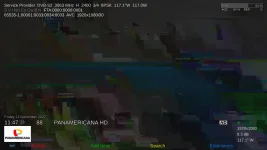
..as for selling the edision i'll do it, not that i want another vu but just to recup some $...
Last edited:
few years ago, vu was showing snr in % & db, but now has % only option. I can only estimate the equivalent of % in db.
here are the snr from vu:
View attachment 17526
View attachment 17527
here is the edision pic for panamericana:
View attachment 17528
..as for selling the edision i'll do it, not that i want another vu but just to recup some $...
Could be the low signal along with the tuner driver on the Open vix image. Try the signal with TNAP 4.2 It will have the no t2mi driver. No way I would sell my Mio4k box. Ive got a VU+ 4k and a mutant60. Mio4k is my fav.
lme
Legit VIP
The same situation is on all 4 images:
tnap4.2, openbh, openvix & atv.
but i think the discussion about the receivers is out of the lnbf subject of this menu.
maybe a user with good results from a osmio receiver can share his own lnb settings for c-band & ku-band.
I just want to make sure my settings are good.
here they are:
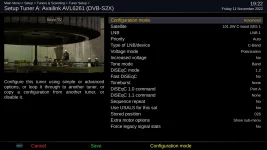
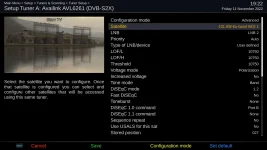
tnap4.2, openbh, openvix & atv.
but i think the discussion about the receivers is out of the lnbf subject of this menu.
maybe a user with good results from a osmio receiver can share his own lnb settings for c-band & ku-band.
I just want to make sure my settings are good.
here they are:


LNB settings are for the dish system. There are no Good or Bad LNB antenna settings. There are antenna lnb settings that work, and those that don't. The lnb settings you have shown are probably correct for the lnb's you have.
Several things are in play when receiving a satellite signal. Some of them are:
lnb
dish - antenna
cabling
connectors
switches
receiver and tuner
All of the items listed above can add to or take away from the noise floor. A lot of times we will have enough satellite signal, but cannot receive it because our systems generate too much noise. This is supposedly why there is a signal to noise ratio (snr). Usually the easiest way to increase the satellite signal and get it above the noise is to increase the dish antenna size. But for a lot of us, that is not possible.
Trying to decrypt an encrypted signal is another bag of worms that can cause reception problems. Any cam is a complicated device and users in Europe will tell you some cams work better than others. People that are trying to decrypt channels are usually using information that is shared openly on the internet and is seen by everyone, including the people that are doing the encrypting. So it's easy to see why encrypted channels can have reception problems when you try to decrypt them.
Shown below are screencaps of a channel on 16apsk transponder with 5/6 fec. A transponder like this takes 11-12 db to open. If you watch the signal meter and move the dish, you will probably see 11 db, then nothing. The fta receiver is working just fine, but the requirements of the transponder require a lot of signal. Modulation types have a lot to do with reception. When you have signal problems, modulation type and transponder fec should be the first things you look at.
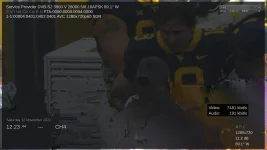
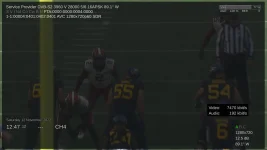
Several things are in play when receiving a satellite signal. Some of them are:
lnb
dish - antenna
cabling
connectors
switches
receiver and tuner
All of the items listed above can add to or take away from the noise floor. A lot of times we will have enough satellite signal, but cannot receive it because our systems generate too much noise. This is supposedly why there is a signal to noise ratio (snr). Usually the easiest way to increase the satellite signal and get it above the noise is to increase the dish antenna size. But for a lot of us, that is not possible.
Trying to decrypt an encrypted signal is another bag of worms that can cause reception problems. Any cam is a complicated device and users in Europe will tell you some cams work better than others. People that are trying to decrypt channels are usually using information that is shared openly on the internet and is seen by everyone, including the people that are doing the encrypting. So it's easy to see why encrypted channels can have reception problems when you try to decrypt them.
Shown below are screencaps of a channel on 16apsk transponder with 5/6 fec. A transponder like this takes 11-12 db to open. If you watch the signal meter and move the dish, you will probably see 11 db, then nothing. The fta receiver is working just fine, but the requirements of the transponder require a lot of signal. Modulation types have a lot to do with reception. When you have signal problems, modulation type and transponder fec should be the first things you look at.


lme
Legit VIP
I got involved in this hobby in 2015, when I got this dish system from an old italian person, located couple miles away from me. This is what I found in his system:
I assume all the hardware dates beck to nineteen O summer era !!
I could read the name of the dish as being StarTrack brand.
I went a step up and replaced his corotor with a corotor 2, as I need to get the ku side also in the mix.
The old lnb found is still in service, and is working better then norsat 5115 dro, for witch i need an elbow to install it, and of course losing ~3db from the snr.
I understand that there are a lot of variable involved in the reception starting with the weather down to hardware and software. As I was suspected, there is no fixed recipe for lnb settings.

I assume all the hardware dates beck to nineteen O summer era !!
I could read the name of the dish as being StarTrack brand.
I went a step up and replaced his corotor with a corotor 2, as I need to get the ku side also in the mix.
The old lnb found is still in service, and is working better then norsat 5115 dro, for witch i need an elbow to install it, and of course losing ~3db from the snr.
I understand that there are a lot of variable involved in the reception starting with the weather down to hardware and software. As I was suspected, there is no fixed recipe for lnb settings.
VuPlus Zero 4K should have db signal readings again.
https://github.com/OpenPLi/enigma2/commit/cdf7b99f4e53241be095538bb216dc8c11cee5aa
Next PLi image update should include it. Oe Alliance images will probably adopt it too.
Hopefully this db feature will be useful even if it is wildly inaccurate. :smiley14:
https://github.com/OpenPLi/enigma2/commit/cdf7b99f4e53241be095538bb216dc8c11cee5aa
Next PLi image update should include it. Oe Alliance images will probably adopt it too.
Hopefully this db feature will be useful even if it is wildly inaccurate. :smiley14:
Hey guys. Not intending on hijacking this discussion.
Ime. You've proven solidly that your VU+ can snag signals that the mio can't. I wonder two things.
IF your VU+ tuner is simply more sensitive or if the soldered in mio tuner may be either not as "hot" (or cold in degrees kelvin in the old days) or if it's perhaps defective.
In other words. If you put 2 mio's side by side with the same image, if one shows a higher dB reading.
It would be cool if EB could try that even if he only had a mio and a mio+.
Another thing. EB, you know. Is the signal strength display a rudimentary value that you code into an image or if the actual tuner received strength coming from the data stream is converted into a value? Maybe I'm off on a tangent. 0 dB is obviously...nothing received. But for example on my mio, transponders on 99W blow in showing 17 dB+ and the bargraph is maxed out.
Is that something that one coder could say.....let's make signal capture (where pixellation occurs) 9 dB and 15 dB is saturation. Another might decide 6 dB is lock and 20 dB is saturation. Good question?
I don't know. Maybe a DRO vs PLL could perform the same if the AFC of the DRO tracks properly. Always wondered how they work internally if the ambient temperature fluctuated widely between day and night. Kind of like an old boat anchor ham radio receiver needs to warm up to stabilize. But ones with PLL synthesizers and crystal ovens turn on rock solid. And keep on rockin'.
It was mentioned that I should get an ortho and a couple of Norsats. Then I'm told that there isn't a phenomenal difference between that setup and a quality LNBF. I was ready to get a bread bag and spool of fishing line and vacuum the pull another run of coax. As it stands I didn't jump for that Harvard ortho and pair of Norsat lnb's. Whew! Comments?
Still trying to figure out something else. In the fall and spring when the earth tilts. Probably 1-2 EST. Sats obliterate like clockwork. 101W will reduce signal about 1 dB/minute. Then it's gone for a half-hour, 45 minutes. 103W awhile later. Same thing. And on down the arc.Same thing in the fall.
Or take 127W for an example. Around midnight it will die for a bit.
But looking at stellar charts I use for my astronomy kick. The sun is nowhere inline with 127. Maybe I'm missing something.
I even adjust the declination on my 12 footer in the spring and fall to keep signals peaked.
FYI. on my mio4k. on C Band 9-9.2 dB seems to be the threshold where pixellation and signal lock loss happens.
On ku I can dip all the way down in the 5's. Is that typical?
......sit back. enjoy the flight. we're not headed to tripoli or havana!
Ime. You've proven solidly that your VU+ can snag signals that the mio can't. I wonder two things.
IF your VU+ tuner is simply more sensitive or if the soldered in mio tuner may be either not as "hot" (or cold in degrees kelvin in the old days) or if it's perhaps defective.
In other words. If you put 2 mio's side by side with the same image, if one shows a higher dB reading.
It would be cool if EB could try that even if he only had a mio and a mio+.
Another thing. EB, you know. Is the signal strength display a rudimentary value that you code into an image or if the actual tuner received strength coming from the data stream is converted into a value? Maybe I'm off on a tangent. 0 dB is obviously...nothing received. But for example on my mio, transponders on 99W blow in showing 17 dB+ and the bargraph is maxed out.
Is that something that one coder could say.....let's make signal capture (where pixellation occurs) 9 dB and 15 dB is saturation. Another might decide 6 dB is lock and 20 dB is saturation. Good question?
I don't know. Maybe a DRO vs PLL could perform the same if the AFC of the DRO tracks properly. Always wondered how they work internally if the ambient temperature fluctuated widely between day and night. Kind of like an old boat anchor ham radio receiver needs to warm up to stabilize. But ones with PLL synthesizers and crystal ovens turn on rock solid. And keep on rockin'.
It was mentioned that I should get an ortho and a couple of Norsats. Then I'm told that there isn't a phenomenal difference between that setup and a quality LNBF. I was ready to get a bread bag and spool of fishing line and vacuum the pull another run of coax. As it stands I didn't jump for that Harvard ortho and pair of Norsat lnb's. Whew! Comments?
Still trying to figure out something else. In the fall and spring when the earth tilts. Probably 1-2 EST. Sats obliterate like clockwork. 101W will reduce signal about 1 dB/minute. Then it's gone for a half-hour, 45 minutes. 103W awhile later. Same thing. And on down the arc.Same thing in the fall.
Or take 127W for an example. Around midnight it will die for a bit.
But looking at stellar charts I use for my astronomy kick. The sun is nowhere inline with 127. Maybe I'm missing something.
I even adjust the declination on my 12 footer in the spring and fall to keep signals peaked.
FYI. on my mio4k. on C Band 9-9.2 dB seems to be the threshold where pixellation and signal lock loss happens.
On ku I can dip all the way down in the 5's. Is that typical?
......sit back. enjoy the flight. we're not headed to tripoli or havana!
As far as satellite signals are concerned, No consumer fta receiver does an accurate job of displaying signal strength. The signal from the satellite does not magically get stronger or weaker. This needs to be understood first!
What we see in signal strength on a fta receiver can be controlled in part by the drivers that the manufacturer produces. These drivers are closed source. For example, Edision had the MIO receiver's signal strength of 100 set to equal 25db. In other words, 100% = 25db. I enjoyed this because at the time, most of our signal devices (apps) that could connect to enigma2 receivers showed in %. So I could adjust the dish and never hit 100%.
Then people complained about the Edision MIO's, saying they performed poorly because the the signal percentage was lower than their old receiver. Not really wanting to lose sales over such nonsense, Edision moved the MIO's percent where 100% = 15db. So today, when you hit 100% of signal on your MIO, your db reading is 15. The db signal can continue to climb, but the signal in % will not go above 100. Understand how this works. Satellite Signal Readings in db or % in a consumer fta receiver do not mean much unless you are trying to align a dish or something similar.
Things have gotten somewhat better as compared to years earlier. The MIO, MIO+, and Octagon SF8008 will all produce similar db readings on most satellite signals. Any Vu+ receiver will be all over the place, especially in db readings. Whether the signal reading accuracy will improve or deteriorate on future receivers is unknown. Hopefully it will improve.
Most fta satellite receiver tuners have a maximum signal strength of -30dbm, and a minimum of -60dbm. Some satellite cards go to -70dbm on the low end, so you get to see a weak signal longer, but you cannot really use it. This means that fta consumer satellite signals are pretty much on equal footing in the signal reception area. It is true some satellite receivers are better than others when it comes to signal reception, but this is almost always at the bottom end which is marginal or weak signals.
Connectors mean something in fta. In general, a lnb with one connector will have a slight signal advantage as compared to a two connector lnb. A fta receiver with one antenna connector usually has a slight advantage over another receiver with multiple connectors. The only time you will notice or see the difference is weak or signals.
Then you have a minimum signal to lock.
Different satellite transponders will need a different signal strength to lock. If a consumer fta receiver cannot lock, then usually the signal meter shows 0 even though a signal actually exists --the signal is just to weak to lock. Charts are available that show how much signal is needed to lock. For example, a DVB-S2 8psk signal with a fec of 9/10 will take 11 db to lock. If the signal falls much below that level then the receiver cannot lock and displays 0. So you may see a signal strength of 70-80 percent one minute, then 0 and wonder what the hell is going on. OR receiver A won't lock it because the signal is marginal but receiver B does lock it and shows somewhere between 70-100%!. Then you think receiver A sux and receiver B is something glorious!
The Amiko Mini4K is currently the worst receiver for signal strength that I own. That thing produces somewhere between 80-100% on every transponder. You can move the dish down to where the signal is very marginal, only 2-3 db on a DVB-S transponder and the Amiko Mini4K will still show 80%. Keep this in mind when you are trying to compare receivers using signal strengths.
What we see in signal strength on a fta receiver can be controlled in part by the drivers that the manufacturer produces. These drivers are closed source. For example, Edision had the MIO receiver's signal strength of 100 set to equal 25db. In other words, 100% = 25db. I enjoyed this because at the time, most of our signal devices (apps) that could connect to enigma2 receivers showed in %. So I could adjust the dish and never hit 100%.
Then people complained about the Edision MIO's, saying they performed poorly because the the signal percentage was lower than their old receiver. Not really wanting to lose sales over such nonsense, Edision moved the MIO's percent where 100% = 15db. So today, when you hit 100% of signal on your MIO, your db reading is 15. The db signal can continue to climb, but the signal in % will not go above 100. Understand how this works. Satellite Signal Readings in db or % in a consumer fta receiver do not mean much unless you are trying to align a dish or something similar.
Things have gotten somewhat better as compared to years earlier. The MIO, MIO+, and Octagon SF8008 will all produce similar db readings on most satellite signals. Any Vu+ receiver will be all over the place, especially in db readings. Whether the signal reading accuracy will improve or deteriorate on future receivers is unknown. Hopefully it will improve.
Most fta satellite receiver tuners have a maximum signal strength of -30dbm, and a minimum of -60dbm. Some satellite cards go to -70dbm on the low end, so you get to see a weak signal longer, but you cannot really use it. This means that fta consumer satellite signals are pretty much on equal footing in the signal reception area. It is true some satellite receivers are better than others when it comes to signal reception, but this is almost always at the bottom end which is marginal or weak signals.
Connectors mean something in fta. In general, a lnb with one connector will have a slight signal advantage as compared to a two connector lnb. A fta receiver with one antenna connector usually has a slight advantage over another receiver with multiple connectors. The only time you will notice or see the difference is weak or signals.
Then you have a minimum signal to lock.
Different satellite transponders will need a different signal strength to lock. If a consumer fta receiver cannot lock, then usually the signal meter shows 0 even though a signal actually exists --the signal is just to weak to lock. Charts are available that show how much signal is needed to lock. For example, a DVB-S2 8psk signal with a fec of 9/10 will take 11 db to lock. If the signal falls much below that level then the receiver cannot lock and displays 0. So you may see a signal strength of 70-80 percent one minute, then 0 and wonder what the hell is going on. OR receiver A won't lock it because the signal is marginal but receiver B does lock it and shows somewhere between 70-100%!. Then you think receiver A sux and receiver B is something glorious!
The Amiko Mini4K is currently the worst receiver for signal strength that I own. That thing produces somewhere between 80-100% on every transponder. You can move the dish down to where the signal is very marginal, only 2-3 db on a DVB-S transponder and the Amiko Mini4K will still show 80%. Keep this in mind when you are trying to compare receivers using signal strengths.
....
It was mentioned that I should get an ortho and a couple of Norsats. Then I'm told that there isn't a phenomenal difference between that setup and a quality LNBF. I was ready to get a bread bag and spool of fishing line and vacuum the pull another run of coax. As it stands I didn't jump for that Harvard ortho and pair of Norsat lnb's. Whew! Comments?
Aw come on and take one for the team. I'd rather ya spend YOUR money and post the results later. lol
Need more signal? Get a bigger dish. If you cannot get a bigger dish, then look at lnb replacement. There is not any magic in most lnbs. Some perform better than others, and there are lnbs that work correctly and lnbs that don't work correctly. Know WHY you are replacing a lnb before spending money.
Intermittent signal problems are usually not in the lnb. LNB's usually work or they don't, but there are rare exceptions. Intermittent signal loss can usually be traced to cabling or connectors. Lots of times moisture is the cause of intermittent signal loss. The least expensive thing to do is check ALL connectors first. Look for loose connections, poor fittings, or moisture inside connectors. Cables should be tested correctly when possible before replacing them.
Intermittent signal problems are usually not in the lnb. LNB's usually work or they don't, but there are rare exceptions. Intermittent signal loss can usually be traced to cabling or connectors. Lots of times moisture is the cause of intermittent signal loss. The least expensive thing to do is check ALL connectors first. Look for loose connections, poor fittings, or moisture inside connectors. Cables should be tested correctly when possible before replacing them.
Aw come on and take one for the team. I'd rather ya spend YOUR money and post the results later. lol
ohhh that paddle-dillo. he think totem pole aliveee. lol.
i'm so tight, only dogs hear it when i fart...
Shown below are a couple of Norsat 8525 RF lnbs with feed. ...
... I will install these lnbs on a 10 foot mesh dish when time permits. I would not pay money for these parts if cheaper parts would do the same job.
I like the ONE I bought. Works better than any of the cheaper (new or used) lnb's I tried previously. I'm considering an ESAT 2022-150, C-Band PLL LNB for my next experiment. About the same price as the 8525 on Ebay.
Code:
https://www.ebay.com/itm/265618361371PLL lnbs require more power as compared to DRO lnbs. PLL lnbs will not help much if any when watching satellite tv. PLL lnbs may help with radio stations and data on transponders with a symbol rate of 1000 or less.

